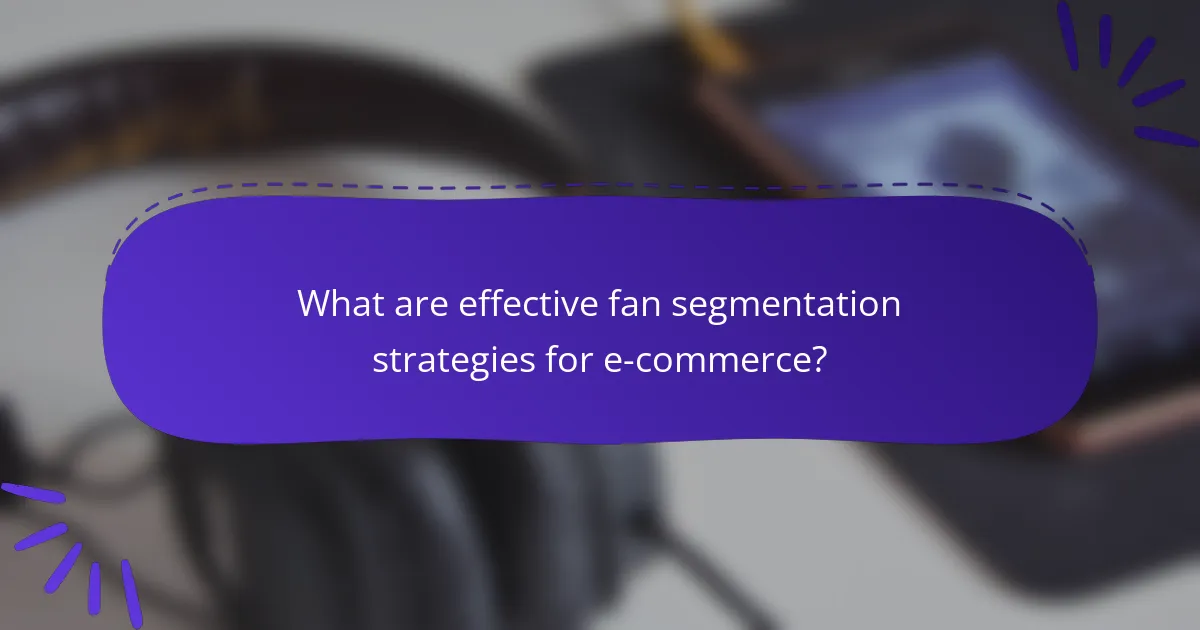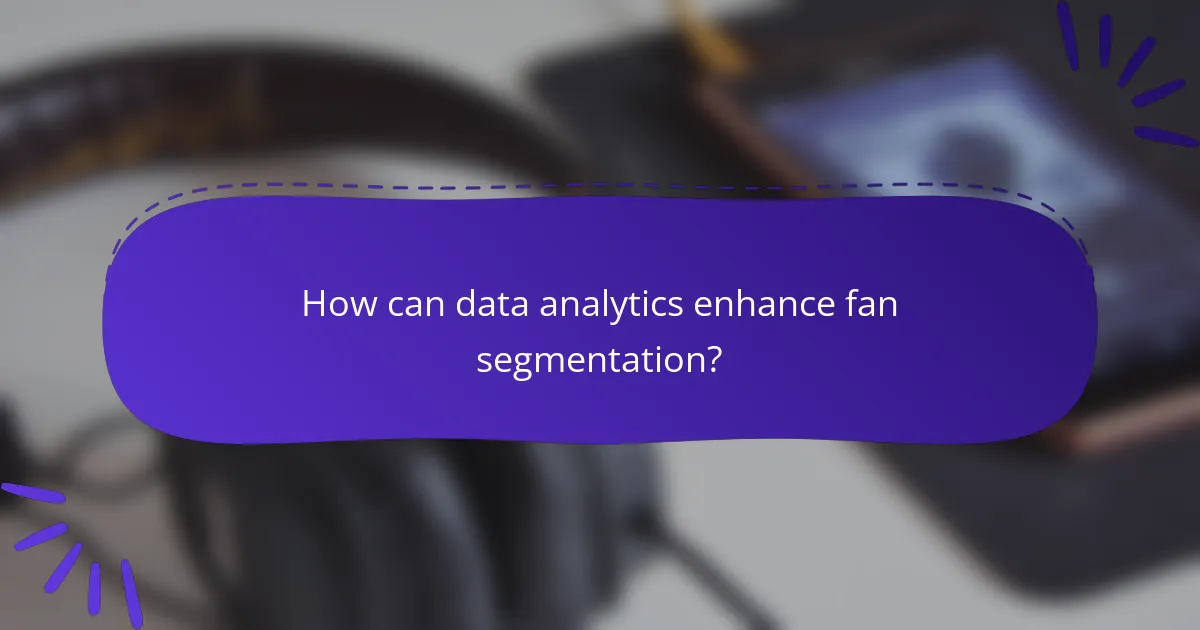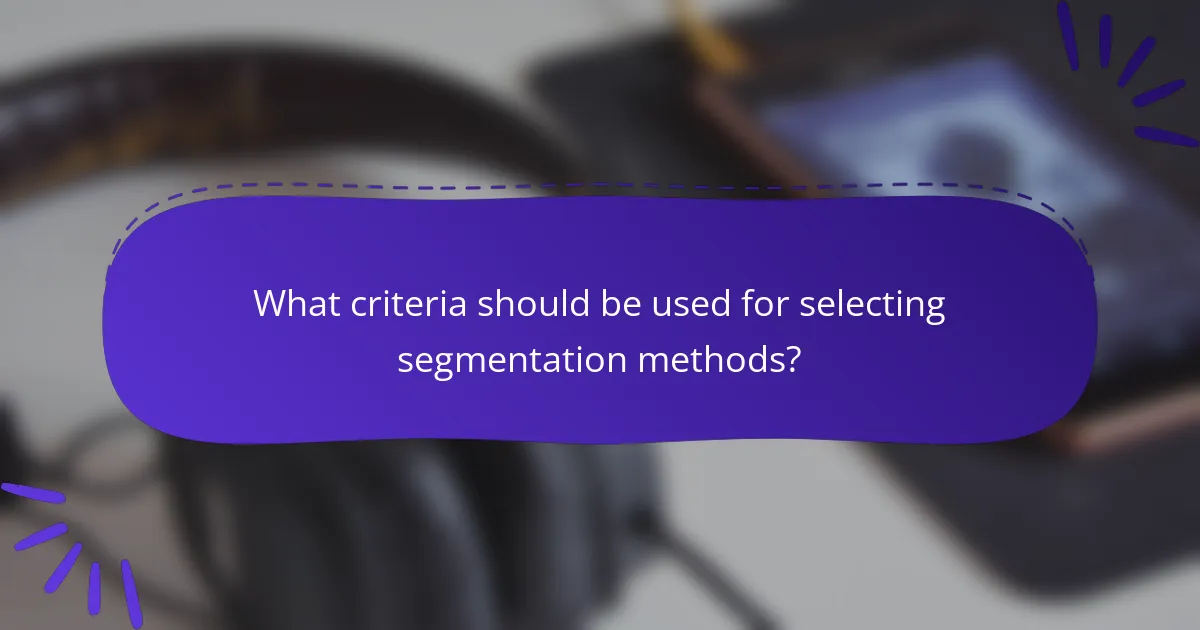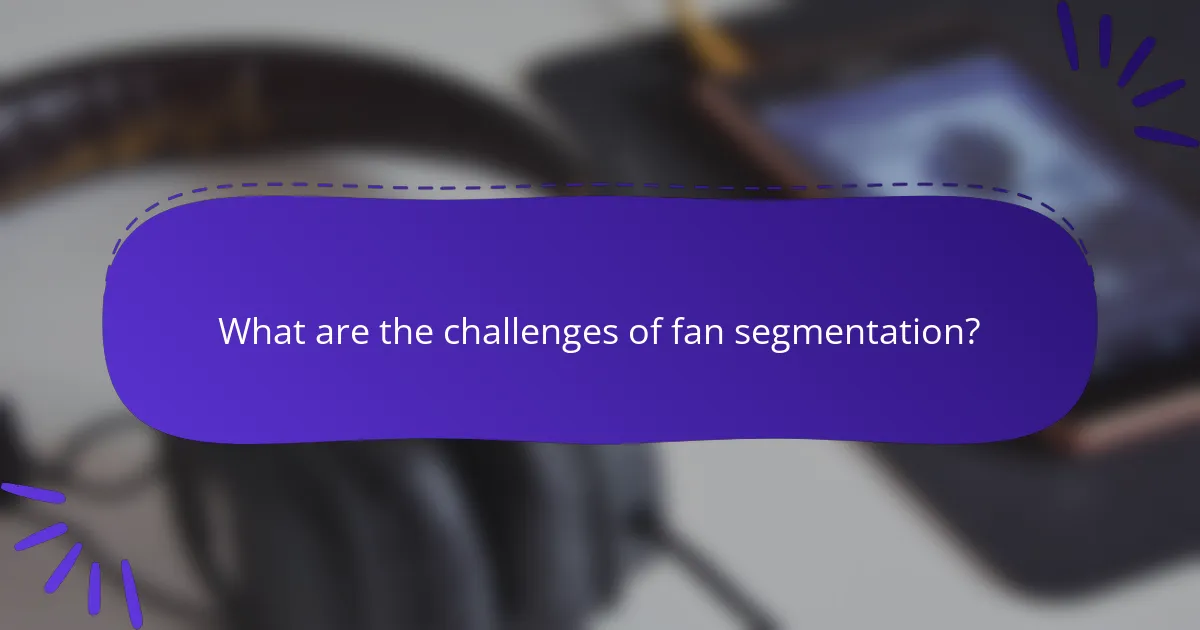Fan segmentation is a crucial strategy for e-commerce, allowing businesses to categorize customers based on shared characteristics to enhance marketing efforts. By leveraging data analytics, organizations can gain insights into fan behavior and preferences, enabling the creation of targeted campaigns that resonate with specific groups. This tailored approach not only boosts engagement but also fosters stronger connections and loyalty among fans.

What are effective fan segmentation strategies for e-commerce?
Effective fan segmentation strategies for e-commerce involve categorizing customers based on shared characteristics to tailor marketing efforts. This approach enhances customer engagement and boosts conversion rates by delivering personalized experiences.
Demographic segmentation
Demographic segmentation divides fans based on quantifiable characteristics such as age, gender, income, and education level. For instance, a sports merchandise store might target young adults with promotional offers on apparel while focusing on families for family-oriented products.
When implementing demographic segmentation, consider using surveys or customer data analytics to gather relevant information. This data can help create targeted campaigns that resonate with specific demographic groups, increasing the likelihood of purchase.
Behavioral segmentation
Behavioral segmentation focuses on customer actions, such as purchasing habits, brand interactions, and product usage. For example, an e-commerce site may identify frequent buyers and reward them with loyalty points, while also targeting occasional shoppers with special discounts to encourage repeat purchases.
To effectively use behavioral segmentation, track customer interactions through website analytics and purchase history. This insight allows for tailored marketing messages that align with customer behavior, enhancing engagement and driving sales.
Psychographic segmentation
Psychographic segmentation categorizes fans based on their lifestyles, values, interests, and personalities. For instance, a brand selling eco-friendly products might target environmentally conscious consumers with campaigns highlighting sustainability.
Utilizing psychographic data can involve conducting in-depth surveys or analyzing social media interactions. This approach helps brands connect with customers on a deeper emotional level, fostering brand loyalty and advocacy.
Geographic segmentation
Geographic segmentation involves dividing fans based on their location, such as country, region, or city. This strategy allows e-commerce businesses to tailor their offerings based on local preferences, cultural nuances, and seasonal trends. For example, a clothing retailer might promote winter apparel in colder regions while focusing on summer wear in warmer areas.
To implement geographic segmentation effectively, analyze sales data by location and consider local events or holidays that may influence purchasing behavior. This localized approach can significantly enhance marketing relevance and effectiveness.
Technographic segmentation
Technographic segmentation categorizes fans based on their technology usage, including devices, software, and online behavior. Understanding whether customers prefer mobile shopping or desktop browsing can inform website design and marketing strategies. For example, a brand might optimize its mobile app for users who predominantly shop via smartphones.
To leverage technographic segmentation, gather data on customer device preferences and online habits. This information can guide the development of targeted campaigns and user experiences that align with the technological landscape of your audience.

How can data analytics enhance fan segmentation?
Data analytics can significantly improve fan segmentation by providing insights into fan behavior, preferences, and demographics. By leveraging data, organizations can create targeted marketing strategies that resonate with specific fan groups, ultimately enhancing engagement and loyalty.
Predictive analytics for targeting
Predictive analytics uses historical data and statistical algorithms to forecast future fan behaviors. By analyzing patterns in fan interactions, organizations can identify which segments are most likely to engage with certain campaigns or products. For example, if data shows that a specific age group frequently attends games, targeted promotions can be designed to attract them.
To effectively implement predictive analytics, organizations should focus on collecting comprehensive data across various touchpoints, such as ticket purchases, social media interactions, and merchandise sales. This holistic view allows for more accurate predictions and tailored marketing efforts.
Customer lifetime value analysis
Customer lifetime value (CLV) analysis estimates the total revenue a fan is expected to generate throughout their relationship with an organization. Understanding CLV helps prioritize marketing resources towards high-value segments, ensuring that efforts yield the best return on investment. For instance, fans who consistently purchase tickets and merchandise may warrant exclusive offers to maintain their loyalty.
To calculate CLV, organizations can consider factors such as average purchase frequency, average transaction value, and retention rates. Regularly updating this analysis will help adapt strategies as fan behaviors evolve, ensuring that marketing efforts remain relevant and effective.

What techniques improve fan engagement through segmentation?
Improving fan engagement through segmentation involves tailoring strategies to specific audience groups based on their preferences and behaviors. By utilizing targeted techniques, organizations can enhance their interactions and foster stronger connections with fans.
Personalized marketing campaigns
Personalized marketing campaigns leverage data to create tailored messages for different fan segments. This approach can significantly increase engagement rates, as fans are more likely to respond to content that resonates with their interests. For example, a sports team might send exclusive merchandise offers to loyal season ticket holders while promoting family-friendly events to casual attendees.
To implement personalized campaigns effectively, consider collecting data through surveys, social media interactions, and purchase histories. Ensure that your messaging aligns with the specific interests of each segment to maximize impact. Avoid generic promotions that fail to address the unique preferences of your audience.
Dynamic content delivery
Dynamic content delivery involves adjusting the content presented to fans in real time based on their behavior and preferences. This technique enhances user experience by providing relevant information, such as personalized event recommendations or tailored news updates. For instance, a fan who frequently attends concerts may receive notifications about upcoming shows in their area.
To utilize dynamic content effectively, invest in technology that tracks user interactions and preferences. Ensure that your platform can adapt content based on real-time data, which can lead to higher engagement and retention rates. Avoid overwhelming fans with too much information; focus on delivering concise, relevant content that meets their needs.

What are successful fan segmentation campaigns in e-commerce?
Successful fan segmentation campaigns in e-commerce involve categorizing customers based on their preferences and behaviors to deliver personalized experiences. These strategies enhance customer engagement and drive sales by tailoring offers and communications to specific audience segments.
Case study: Nike’s personalized offers
Nike utilizes fan segmentation by analyzing customer data to create personalized offers based on individual preferences and purchase history. For instance, they send targeted promotions for specific products, such as running shoes or athletic apparel, to customers who have shown interest in those categories.
This approach not only increases conversion rates but also fosters brand loyalty, as customers feel valued through tailored communications. Nike’s use of mobile apps and email marketing effectively delivers these personalized offers, ensuring they reach the right audience at the right time.
Case study: Spotify’s tailored playlists
Spotify excels in fan segmentation by curating personalized playlists that cater to the unique tastes of its users. By analyzing listening habits and preferences, Spotify generates playlists like “Discover Weekly” and “Release Radar,” which introduce users to new music aligned with their interests.
This strategy enhances user satisfaction and retention, as listeners are more likely to engage with content that resonates with them. Spotify’s algorithm-driven approach demonstrates the power of data in creating meaningful connections with fans, ultimately driving user growth and engagement.

What criteria should be used for selecting segmentation methods?
Selecting segmentation methods requires evaluating criteria that align with your business objectives and ensure the approach can grow with your needs. Key considerations include how well the segmentation aligns with your overall goals and the scalability of the chosen method.
Alignment with business goals
Segmentation methods should directly support your business goals, whether that’s increasing revenue, enhancing customer satisfaction, or improving engagement. For instance, if your goal is to boost sales among a specific demographic, focus on methods that highlight purchasing behaviors and preferences within that group.
Consider using a mix of qualitative and quantitative data to ensure your segmentation reflects real customer needs. Regularly review and adjust your segmentation strategies to maintain alignment with evolving business objectives and market conditions.
Scalability of segmentation approach
The scalability of your segmentation method is crucial for accommodating growth and changes in your customer base. Choose approaches that can expand easily without requiring a complete overhaul, such as data-driven methods that can incorporate new data sources over time.
For example, a segmentation strategy based on customer behavior can adapt as you gather more insights, while rigid demographic segmentation may become outdated quickly. Regularly assess your segmentation framework to ensure it remains effective as your business and market landscape evolve.

What are the challenges of fan segmentation?
Fan segmentation involves categorizing fans based on their behaviors, preferences, and demographics. The main challenges include data collection, accurately interpreting fan motivations, and ensuring that segments are actionable for targeted marketing strategies.
Data Collection Difficulties
Gathering comprehensive data on fans can be challenging due to privacy concerns and the variety of platforms where fans engage. Organizations often rely on surveys, social media analytics, and ticket sales data, but these sources may not provide a complete picture. Ensuring data quality and relevance is crucial for effective segmentation.
Interpreting Fan Motivations
Understanding why fans engage with a brand or team is essential but complex. Motivations can vary widely, influenced by factors such as personal experiences, social connections, and cultural context. Misinterpreting these motivations can lead to ineffective marketing strategies that fail to resonate with specific fan segments.
Creating Actionable Segments
Once data is collected and motivations understood, the next challenge is to create segments that are actionable. Segments must not only be distinct but also large enough to justify targeted campaigns. Balancing specificity with market size is key; overly narrow segments may limit marketing effectiveness, while overly broad ones can dilute messaging.


